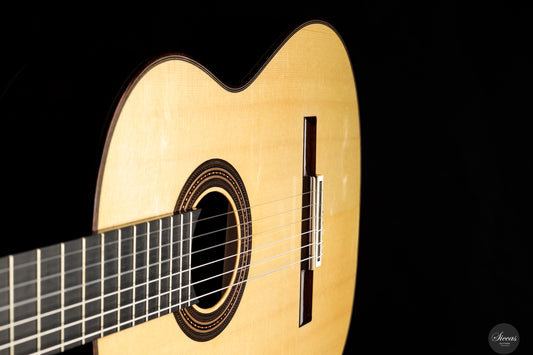
Guitar Tutorial with Matthew McAllister: Practicing musically
Musically Mindful Practicing: Insights from a Classical Guitar Tutorial
At Siccas Guitars, we are passionate about helping musicians deepen their connection with the music they play. In our latest video, a key focus is on musical interpretation during practice, as emphasized by our expert guitarist. This concept can transform technical exercises and piece fragments into more engaging and emotionally compelling performances. Here, we explore the important lessons from the tutorial on how to practice with musicality in mind.
Beyond Technique: The Importance of Musical Layers
In the video, the guitarist highlights that technical exercises should never be just about finger movements or hand positioning. Instead, every practice session should be an opportunity to explore musical expression. Rather than focusing solely on mechanics, players are encouraged to add musical layers to their practice. This involves experimenting with:
- Tone color: Shifting the timbre to create different emotions within a piece.
- Articulation: Paying attention to how the left hand interacts with the fretboard, shaping each note with intention.
- Dynamic contrast: Integrating softer and louder passages to bring the music to life.
As the guitarist mentions, "Every time I'm doing it, I'm thinking musically, provoking myself to change the color, think about left-hand articulation, and make it more interesting to listen to." This mindset can be applied to any technical practice, turning even the simplest exercises into an exploration of musical possibilities.
Crafting Your Own Interpretation
Another crucial point discussed is that through experimenting with different musical ideas during practice, one of those ideas will eventually stand out, forming the foundation of your personal interpretation of the piece. By practicing with a focus on musical expression, players naturally develop a unique voice in their performance. This approach aligns technique with artistic vision, resulting in more convincing and captivating interpretations.
"One of those musical ideas will rise up to the top," the guitarist explains, "and it will become your interpretation, your way of playing the piece." When the technical foundation serves the music itself, audiences are more likely to be engaged and less focused on critiquing technique.
The Relationship Between Technique and Musicality
One of the tutorial's core messages is that technique and musicality are deeply intertwined. Developing technique in isolation can make the playing sound mechanical or detached. But when technique is used in the service of musical expression, it becomes a natural extension of the music. This shift in approach not only improves technical proficiency but also helps players perform with greater ease and emotional depth.
The guitarist summarizes this beautifully: "We listen to it in a much more convinced manner, we're much happier to accept what you're doing and less critical of the technique, because it serves a musical purpose."
Applying Musicality to Every Practice Session
The final takeaway is a simple yet powerful reminder: Practice musically. Whether working on a challenging technical passage or playing through simple scales, keep the music at the forefront of your mind. Incorporating these elements into your daily routine will not only refine your technique but also make your practice sessions more enjoyable and productive.
The guitarist encourages, "Happy practicing, but happy practicing musically." This advice reinforces the idea that musical exploration should be a part of every practice session, no matter how basic or advanced the material.


















